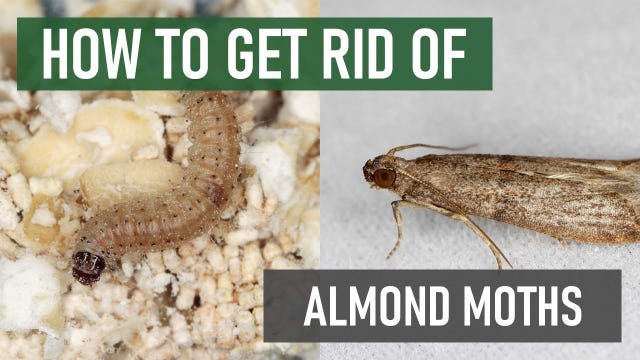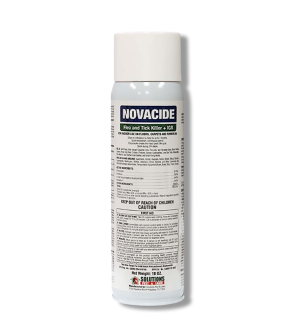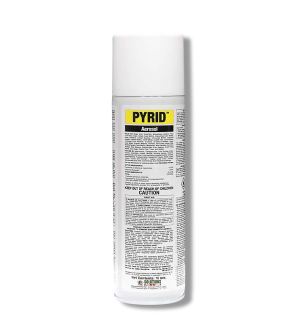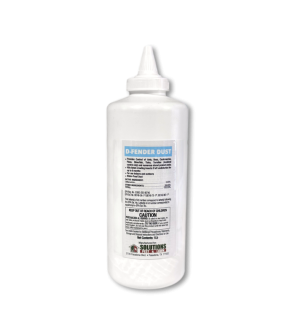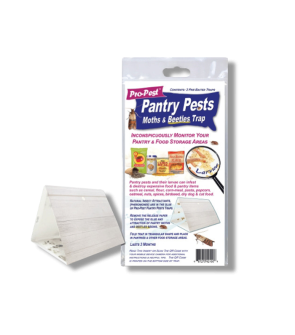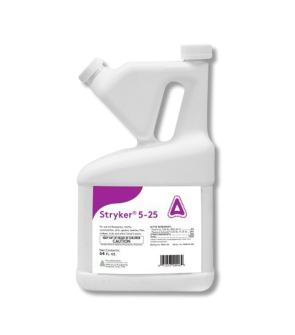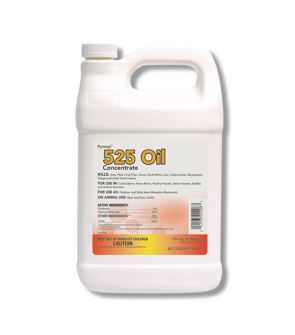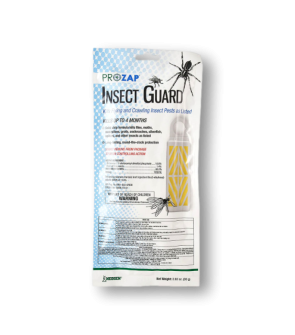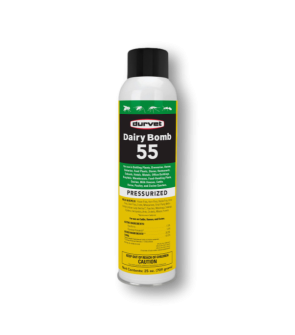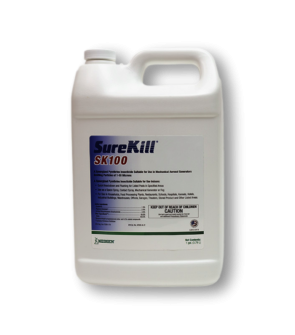Gain access to personalized product screening, the best pricing, rewards, and more!
Most Effective Products
Almond Moth Control: How To Get Rid of Almond Moths
This page is a general almond moth control guide. Using the products and methods suggested, you will get control of almond moths. Follow this guide and use the recommended products; we guarantee 100% control of almond moths.
While the Indian meal moth is the more common pantry pest that infests food storage areas, the lesser-known almond moth is just as damaging and contaminating. Almond moths are found worldwide and are often discovered invading imported cargo.
The almond moth's name comes from its enjoyment of eating almonds and a variety of other nuts stored in pantries. Other common names include the tropical warehouse moth, the dried currant moth, or the fig moth.
Almond moths do not transmit diseases, bite, or sting but can contaminate food products during cargo and transportation. This amounts to a loss of profit for companies and homeowners who, after buying the product, cannot use it.
If you have an infestation of almond moths, the following DIY guide will show you how to get rid of this pest and clear your pantry with our helpful advice and product recommendations.
Identification
Before you can continue with a treatment program, you need to make sure you're dealing with almond moths. Careless identification can lead to using the wrong treatment method, which can be a waste of time and money. Below, we'll describe some of the common characteristics that set almond moths apart.

- The adult almond moth grows around half an inch in length and can appear to be brown or grey in color.
- The presence of adult moths easily indicates infestations, but larvae do no real damage to your stored products as they eat, produce droppings, and develop. Almond moth larvae have creamy white bodies, brown head capsules, and rows of tiny spots that run along the body's length. When mature, they usually travel away from their food source to pupate.
- Their wings are brownish- or blackish-gray, with the wing base lighter than the wingtip.
Use the image and description above to help you properly identify almond moths in your pantry. If you are not totally sure, contact us, and we will assist you with proper almond moth identification.
Inspection
After you have properly identified the almond moth, you need to proceed with an inspection to determine where the infestation began. During the inspection, you will search the areas where food is stored to find the source of the infestation.

Where To Inspect
To confirm almond moth activity, look in and around your pantry or where packaged foods are stored. If you find pupae among the shelves or other parts of the house, that's a start, but focus on finding infested packages.
Almond moths primarily target almonds, grains, and seeds, but they won't hesitate to infest other foods, too. Be sure to check any drawers and shelving for cracks and crevices where larvae can hide. Take note of which foods are infested and where you’ve seen larvae.
What To Look For
Check inside food packages for webbing, larvae, and moths.
Treatment
After inspecting the areas where almond moths are discovered, you can begin treatment. Remember to read all product labels, follow the application instructions on these labels, and stay safe by wearing personal protective equipment (PPE).
The best method for getting rid of an almond moth infestation is to empty your pantry entirely and discard all your stored dried food products. After doing a detailed cleanup and vacuuming, you will essentially need to start your pantry over from scratch.
Once you have cleared and cleaned your pantry, treat these pests with products like Pyrid and Novacide, then use traps like Pro-Pest Pantry Moth & Beetle Traps to catch and monitor for moths and larvae.
Step 1: Preliminary Cleanup and Vacuuming
Begin by prepping the areas for almond moth treatment. To do this, you will get rid of all the boxed and bagged foodstuffs in the area where the infested item was found and clean the surrounding areas. You will also need a vacuum and caulk.
While that may sound extreme, it should be assumed that one infested package means there are more larvae and moths in your other packaged foods.
Almond moth larvae can invade packaging through the smallest gaps and penetrate paper or plastic to reach whatever food source is nearby. For every adult moth you have seen, imagine there are more than 100 eggs waiting to hatch.
Next, vacuum all cracks and crevices in your pantry shelving. Small pantry pests may be found in these tight spaces as they travel from place to place. Be sure to throw out the vacuum’s contents outdoors when you are done.
Wipe down the pantry shelves with water to clean up any food residue. Do not use strong cleaners or bleach, as these will protect pests from the pesticides you apply.
Before using our recommended products, ensure all food goods are cleared off, and the cabinets, shelves, and pantries are empty.
Step 2: Treat Cracks and Crevices with Pyrid Aerosol
Pyrid Aerosol is a synthetic pyrethroid insecticide used as a flushing agent. It is effective in treating tight cracks and crevices where moths or other pantry pests may be hiding. Almond moths tend to hide inside small spaces and lay eggs, so applying this will flush them out and kill them with contact.
This product is made with pyrethrins, a botanical insecticide, so it is safe to use in food storage areas, though you should still clear out your pantry and keep people and pets away from the area until the vapors have dispersed.
To use Pyrid Insecticide Aerosol as a crack and crevice treatment, affix the red applicator and straw to the spout. Shake the can, and spray along the lengths of any cracks and crevices in your pantry where any moths or their larvae could be hiding.
When treating cracks and crevices, you should spray in quick bursts, usually about 1 second per foot. Pyrid Insecticide Aerosol does not leave a residual, but it is an excellent contact spray with a powerful knockdown and quick kill.
Step 3: Apply Novacide Aerosol
Next, apply Novacide Flea & Tick Killler. Novacide Flea & Tick Killer is another insecticide aerosol, but this one contains an insect growth regulator or IGR. This will disrupt the moths’ life cycle and prevent eggs, larvae, and pupae from developing into reproductive adults. Additionally, this product has a long-lasting residual and will control treated areas for up to 7 months.
Apply Novacide Flea & Tick Killer as a spot treatment along the edges of your shelves. Just shake the can, hold it upside-down, and spray a barrier where shelving meets the wall. Affected moths will not be able to produce eggs, and larvae will not be able to develop into reproductive adults.
Do not let people or pets enter areas treated until the spray completely dries.
Step 4: Apply Pro-Pest Pantry Traps
Once your chemical applications have dried, set up Pro-Pest Pantry Moth & Beetle Traps in your pantry to lure and catch flying moths. These traps contain pheromones that attract many stored product pests.
Peel off the wax paper, then fold the trap into a tent. You can set the trap on a shelf or hang it to catch different crawling or flying insects.
One trap will cover an area of up to 300 square feet. Any moths in the area will be drawn to the trap and stuck on the glue.
Prevention
Once you have successfully eliminated the infestation of almond moths, you need to take measures to ensure they don't infest again. Here are some tasks we suggest:
- When buying dry foods at the grocery store, examine the packaging. If you can see the product through transparent packaging, try to look for any moths, larvae, or other pests. If you see any holes, rips, tears, or other openings, pass that item up.
- It’s best to keep food in tight-fitting or sealed containers. Put cereals, grains, and flour in containers that can be tightly air-sealed. Pet food and bird seed are often overlooked and highly conducive to pantry pests, so storing pet food in sealed containers is important. By keeping food in air-tight containers, you can stop infestations from spreading. If an infestation starts inside a sealed container, the food was already infested with eggs before it went in, and you can throw it out without risking the rest of your pantry.
- Finally, keep up with regular pesticide applications to ensure yearly protection. With Novacide Flea & Tick Killer's 7-month residual, we recommend applying it twice a year for preventative applications. Be sure to check traps regularly and replace them every three months.
Key Takeaways
What are Almond Moths?
- Almond moths are a common pantry pest found in facilities that store dried food products. This pantry moth is called the almond moth because it is often found infesting stored almonds.
How to Get Rid of Almond Moths
- To address an almond moth infestation, you will need to do a detailed cleanup of your pantry, removing infested food items, vacuuming shelves, and applying a combination of Pyrid Aerosol, Novacide Aerosol, and Pro-Pest Pantry Moth Traps.
Preventing Almond Moth Reinfestation
- Remember that to prevent future infestations, you can store food in plastic containers and only buy enough food for a week. Regularly monitor your pantry with Pro-Pest Pantry Moth traps and apply Novacide Aerosol every seven months for continued protection.






